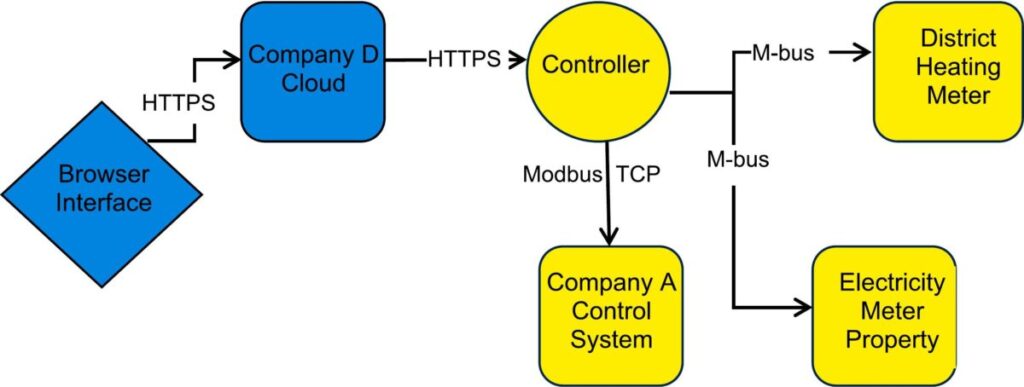Researchers in Sweden have analyzed the impact of a hybrid heating system that combines heat pumps and district heating on five real buildings. The analysis showed that residents were able to save up to € 2,768 ($ 3,159) compared to a scenario without a bronze coupling.
A group of scientists from Sweden has evaluated the efficiency of five buildings with several families using hybrid systems that combine exhaust air pumps with district heating.
“This study evaluates system performance in a unique way under newly introduced dynamic tariff structures, which demonstrates significant energy and cost savings,” said researcher Katarina RUPAR-GADD said PV -Magazine. “The research fills a gap in empirical studies on the demand side management by offering usable insights into optimizing heating activities based on local price models.”
The research was conducted on three Real-World buildings in the Växjö municipality in Sweden, which in 2024 introduced a critical peak prize rate. The buildings use smart controls for space heating and household water, based on electricity prices on the market.
Data was collected in those buildings for the 2022-2024, after the installation and activation of the hybrid systems. Although the electrical costs are a subscription costs, effect costs, transfer costs and energy tax, the district heating price is a power price, effect price, energy price and a tax with 25% added value (VAT).
“Data collection was carried out continuously, mainly via e -mail and telephone contact, whereby invoices for the costs of electricity network, district heating costs and costs for electricity trade were obtained for the buildings of the Case Study,” explained the resachines. “Calculations were performed in Excel, where district heating and electricity costs, as well as consumption, were allocated for each case Study building on a monthly basis. Tables were divided into electricity network, electricity trade and district heating based on the price components.”
Buildings 1, 2 and 4 all have a smart operating system for heating, using an automated reaction to adjust the source of use instead of reducing it. The smart control of building 1 is based on an operating system made by two companies, which is based on one solution in building 2, while the smart control in building 4 is based on AI. The heated areas are 7,183 m2, 816 m2 and 3,409 m2 respectively. Buildings 3 and 5 work on manual or fixed base switch systems, without automation. Their sizes are 5,914 m2 and 3,896 m2.
The analysis showed that the total heating energy consumption in all case studies fell, with reductions ranging from 15% to 32%. In addition, the scientists found that the largest reduction took place in the case of building 1, with an average monthly fall of 32%, followed by case building 5 by 25%, and case buildings 2 and 4 by 17%and 15%respectively.
Moreover, they have determined that the hybrid systems significantly reduced the dependence on district heating, with building 1 achieving a reduction of 48% in district heating consumption, while case buildings 5 and 4 saw reductions of 45% and 43% respectively. Case Building 2 turned out to have a “more modest” reduction of 28%. “
The invoicing power – that is, the highest amount of heating that is expected to be on a very cold day – was reduced in all cases, which resulted in savings on district heating. According to the results, Case Building 1 is billing power with 33 kW, which saved € 2,768 ($ 3,159) in 2023. Case Building 3, which the system has previously accepted, saved € 1,880 in 2023 and € 1,557 in 2024. Casedakes 2 and 4 saved less than € 500 in the first year after installation.
“One of the most unexpected findings is that, despite the fact that, despite the fact that it was a broadly discussed problem in Sweden, the volatile electricity prices turned out to be the least important part of the total heating costs,” concluded RUPAR-GADD. “Future research will be aimed at further investigating the effects of local price models in other regions, as well as the potential impact of changing existing price structures, for both multi-family residential buildings and commercial properties.”
The results of the research work were presented in “Energy efficiency and economy with hybrid control: district heating and heat pumps in multi-family homes“Published in Energy and buildings. The research team included Academics at Linnaeus University in Sweden and Consultancy Energirevisor ERW.
This content is protected by copyright and may not be reused. If you want to work with us and reuse part of our content, please contact: editors@pv-magazine.com.

